Based on the recommendations we had received at the Manitoba welcome center a couple of days earlier, we decided to journey north from Winnipeg to take a brief tour of the "Interlake Region" between Lake Winnipeg and Lake Manitoba. We planned to visit three towns, Gimli, Arborg and Selkirk.
Gimli is about an hour's drive north of Winnipeg. On our way out of town, we passed by the notable Holy Trinity Ukrainian Orthodox Cathedral. The five-dome building is an impressive sight reportedly modeled on Saint Sophia Cathedral in Kyiv, Ukraine.

A short distance north of the city, the scenery quickly became agricultural with views of grain fields and sunflowers dominating.


Gimli, a town of about 2,400, lies on the shore of Lake Winnipeg and has a large Marina; it was founded almost 150 years ago by a colony of Icelandic pioneers seeking seeking escape from harsh economic conditions compounded by the eruption of a volcano.

Nestled along the town's shoreline among many nice homes, we came to "Viking Park," a reminder of the town's proud heritage.


The metal panels partially encircling the rather menacing looking Viking recount the history of the founding and growth of Gimli. They also describe Runes - the ancient symbolic "alphabet" of the Vikings who left numerous carved stones behind during their voyages.


Minnesota has a famous runestone found at Kensington. It is certainly plausible in the minds of some that Icelandic Vikings, after discovering America, explored Lake Winnipeg, traveled the Red River south into Minnesota and ended up at Kensington.
Linda gave the Viking statue a close inspection.
From the statue, we walked out for a tour of the harbor.

The harbor is protected from lake waves by a large seawall that has been decorated with murals painted by local artists.


One of the murals depicts a notable event in the town's history from 1997 when an Air Canada 767 flying from Ottawa to Edmonton ran out of fuel and was forced to glide to a landing on the abandoned runway of the former Air Force Base at Gimli. A fascinating story, now remembered as the "Gimli Glider."

The harbor, largest on Lake Winnipeg, features a large collection of boats and an impressive harbor master's office with lighthouse.
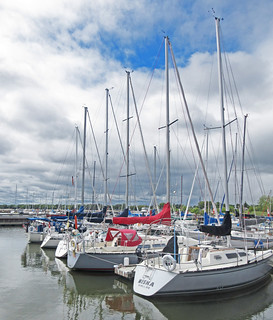

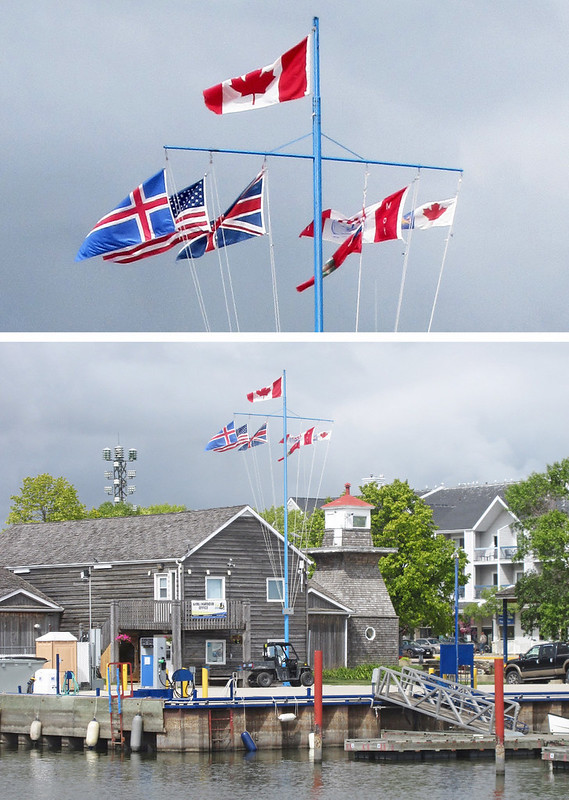
Fresh fish fillets are available along the dock.
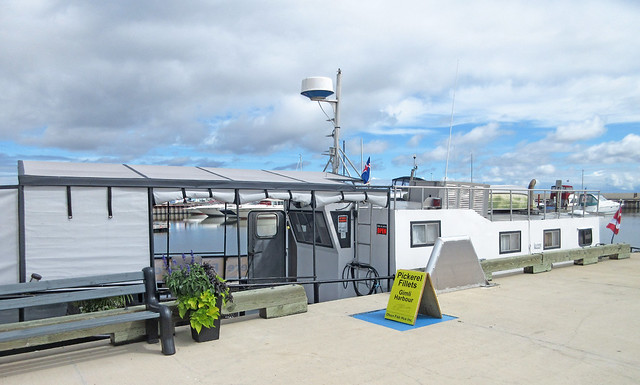
The harbor is home to the M. V. Namao, a large research vessel that travels extensively throughout Lake Winnipeg.
At the end of the seawall, the harbor entrance presents an attractive view.
Our next stop in Gimli was at the New Iceland Heritage Museum in the heart of the town. Exhibits tell the story of declining conditions in Iceland and both the hardships and opportunities found in the new land.

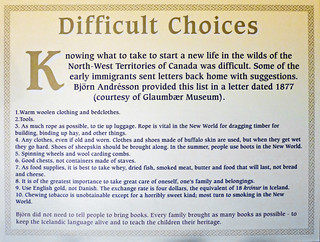
By the 1890s, Poles and Ukrainians followed the Icelanders and brought their diverse agricultural skills to the area.

Before leaving Gimli we made a stop at the famous Sugar Me Cookie bakery. The bakery is listed as a "must visit" in most info about Gimli. Vinarterta, the cake of New Iceland, is touted as the most famous product of the bakery. Second on the recommended list is the butter tarts. We tried both with the butter tart being favored by us.



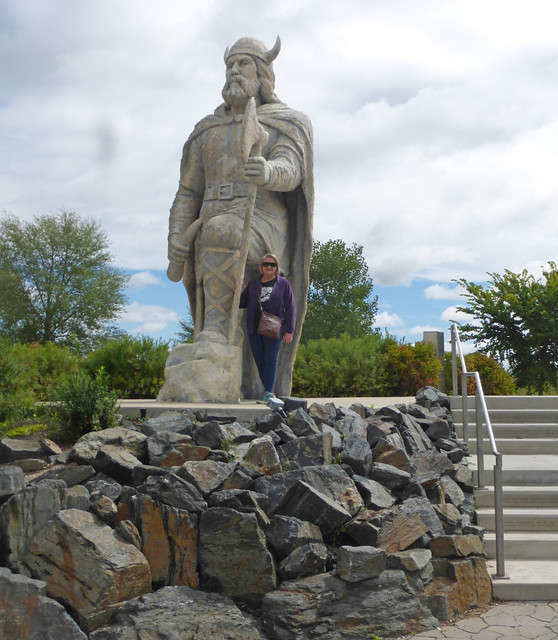








No comments:
Post a Comment